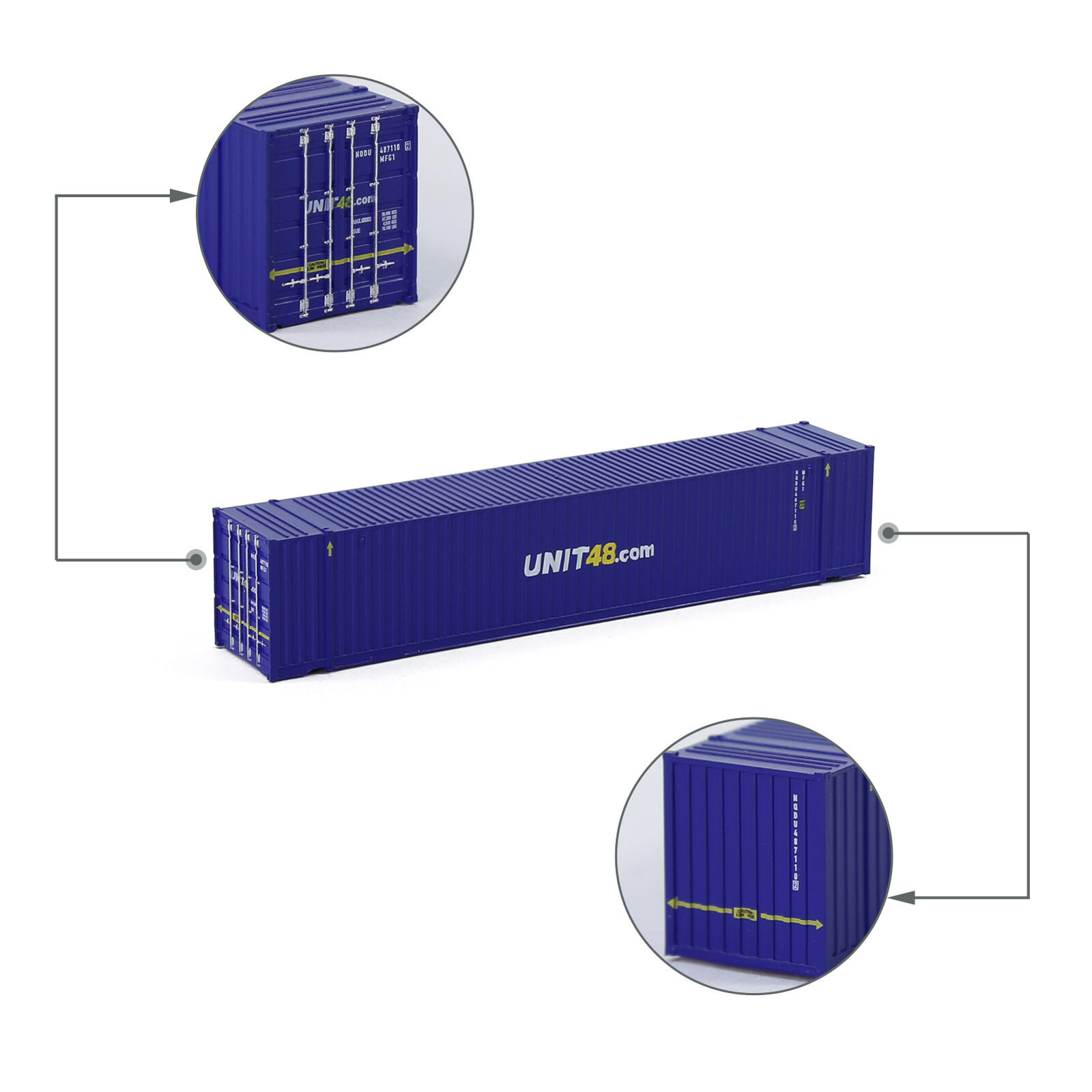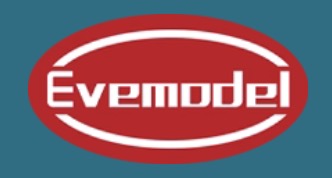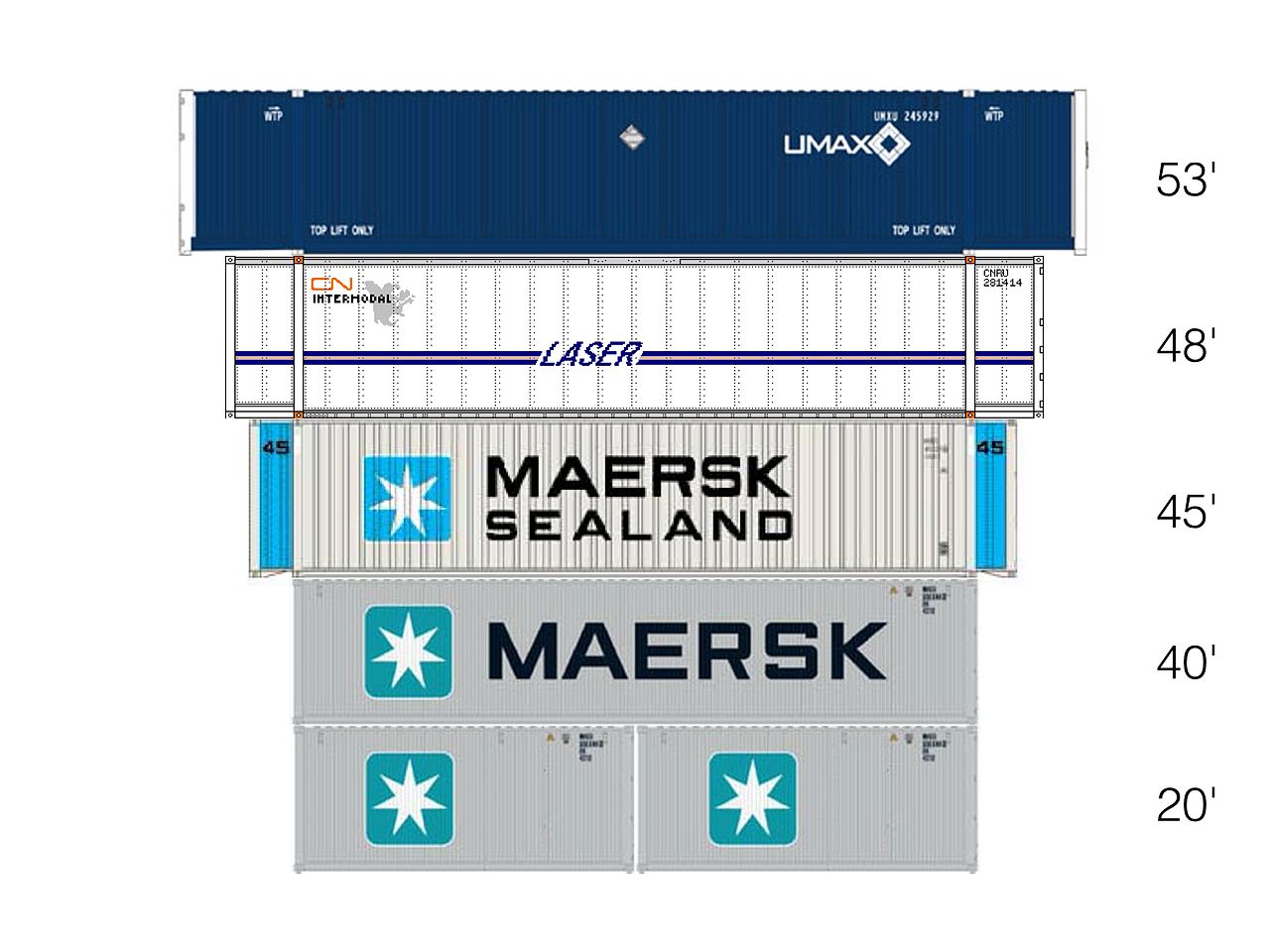Prototype History: An intermodal container is a large standardized shipping container, designed and built for intermodal freight transport, meaning these containers can be used across different modes of transport – from ship to rail to truck – without unloading and reloading their cargo. Intermodal containers are primarily used to store and transport materials and products efficiently and securely in the global containerized intermodal freight transport system, but smaller numbers are in regional use as well. These containers are known under a number of names, such as simply container, cargo or freight container, ISO container, shipping, sea or ocean container, container van or (Conex) box, sea or c can.
The 48-foot (14.63 m) shipping container is a High Cube container in that it is 9 ft 6 in (2.90 m) tall on the exterior. It is 8 ft 6 in (2.59 m) wide which makes it 6 inches (15 cm) wider than ISO-standard containers. This size was introduced by container shipping company APL in 1986, and is used domestically in North America on road and rail, and may be transported on deck by ship. This size being 8 feet (2.44 m) longer and 6 inches (15 cm) wider has 29% more volume capacity than the standard 40-ft High Cube, yet the cost to move it by truck or rail are almost the same.
From Wikipedia
The 48-foot (14.63 m) shipping container is a High Cube container in that it is 9 ft 6 in (2.90 m) tall on the exterior. It is 8 ft 6 in (2.59 m) wide which makes it 6 inches (15 cm) wider than ISO-standard containers. This size was introduced by container shipping company APL in 1986, and is used domestically in North America on road and rail, and may be transported on deck by ship. This size being 8 feet (2.44 m) longer and 6 inches (15 cm) wider has 29% more volume capacity than the standard 40-ft High Cube, yet the cost to move it by truck or rail are almost the same.
From Wikipedia
Road Name History: UNIT48 (a subsidiary of UNIT45) offers a standard range of 48ft containers, including dry units, all-electric, diesel-electric reefers and curtain-sided units especially for the Australian market. The designs are constantly revised to take account of new technology and materials as the become available and proven in service. UNIT48 engineers supervise the manufacturing process at the factory, liaise with classification surveyors to ensure that the containers meet international requirements and also arranges delivery from factory to a location nominated by the customer.
Item created by: CNW400 on 2024-08-04 17:42:18
Last edited by: CNW400 on 2024-08-04 17:52:49
If you see errors or missing data in this entry, please feel free to log in and edit it. Anyone with a Gmail account can log in instantly.
Last edited by: CNW400 on 2024-08-04 17:52:49
If you see errors or missing data in this entry, please feel free to log in and edit it. Anyone with a Gmail account can log in instantly.






